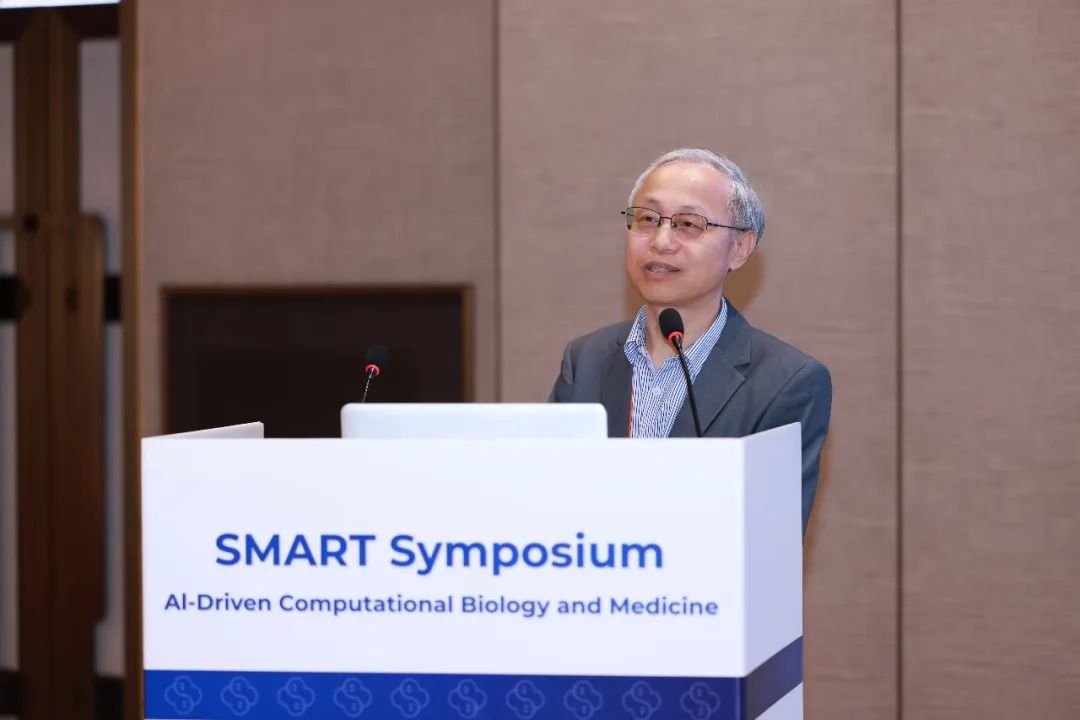On October 27, 2024, the Symposium on AI-Driven Computational Biology and Medicine was held in Guangming, Shenzhen. This academic gathering was organized collaboratively by the Shenzhen Medical Academy of Research and Translation (SMART) and the Shenzhen Bay Laboratory (SZBL). The event invited 32 internationally recognized experts and scholars who came together to share insights and deliver keynote addresses. More than 200 researchers participated, acquiring knowledge about leading innovations in artificial intelligence and big data, computational genomics, structural and dynamic research, generative AI, and drug development.
The symposium was thoughtfully organized by the committee, led by distinguished researchers Dr. Jiali Gao, Dr. Yaoqi Zhou, and Dr. Qin Peng from the Institute of Systems and Physical Biology at SZBL. Their meticulous planning provided a high-level platform for academic interaction.



The symposium effectively wrapped up on October 29. It facilitated academic exchanges and partnerships across nations, while igniting new concepts and motivation in the field. Participants expressed that the thorough discussions resulted in significant insights, providing fresh avenues for their upcoming research. The conference is expected to create a profound and enduring effect on the field.
Key features of the event were a presentation by Professor Kendall N. Houk from UCLA, who explored the uses of AlphaFold 2 in predicting protein folding. He described how the combination of quantum mechanics (QM) and molecular dynamics (MD) could reveal the processes behind enzyme catalysis and ligand binding.

William L. Jorgensen, the Sterling Professor of Chemistry at Yale University and a prominent figure in computational chemistry, discussed progress in virtual screening, ADME property forecasting, and free energy perturbation (FEP)-assisted lead compound enhancement. His expertise in molecular recognition and protein-ligand interactions offered a comprehensive outlook on drug discovery.

Teresa Head-Gordon, a distinguished professor from UC Berkeley, discussed her work on a physics-based, systematic machine learning workflow for evaluating drug molecule potency. She also introduced innovative algorithms like iMiner and the Llama3.1 large language model for compound screening.

Professor Yun-Dong Wu from Peking University Shenzhen Graduate School and Chief Scientist at Shenzhen Bay Laboratory presented groundbreaking research on drug design involving cyclic peptides and protein-peptide interactions. Meanwhile, Professor Suwen Zhao from ShanghaiTech University highlighted the discovery of novel DNA modifications in phages through enzyme function prediction.

Professor Mark von Itzstein from Griffith University, known for his glycointeractome research on clinically significant viruses, discussed multidisciplinary approaches to understanding carbohydrate recognition mechanisms. His work is advancing the development of therapies for respiratory viruses.

Maria Carolina Florian from Bellvitge Biomedical Research Institute shared insights into the cellular and molecular mechanisms of stem cell aging. Her research aims to sustain regenerative capacity, prevent age-related diseases, and extend healthy lifespan.

These distinguished speakers not only showcased their remarkable achievements but also provided invaluable inspiration and knowledge for future scientific endeavors.
At the symposium’s conclusion, Dr. Yaoqi Zhou awarded outstanding poster presenters and delivered a closing speech, marking the successful end of the event. This symposium has proven to be a vibrant hub for global scientific exchange, offering forward-thinking academic guidance.
